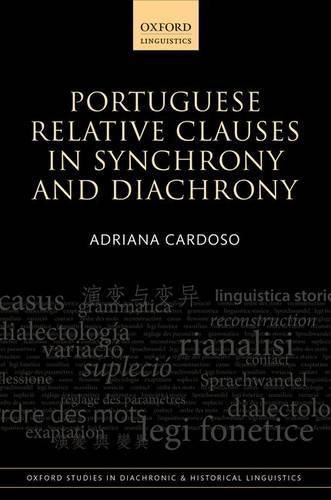Readings Newsletter
Become a Readings Member to make your shopping experience even easier.
Sign in or sign up for free!
You’re not far away from qualifying for FREE standard shipping within Australia
You’ve qualified for FREE standard shipping within Australia
The cart is loading…






This book explores language variation and change from the perspective of generative syntax, based on a case study of relative clauses in contemporary European Portuguese and earlier stages of Portuguese. Adriana Cardoso offers a comparative account of three linguistic phenomena in the synchrony and diachrony of Portuguese-remnant-internal relativization, extraposition of restrictive relative clauses, and appositive relativization-and shows that the changes affecting these structures conspired to reduce the patterns of nominal discontinuity available in the language. Adopting a cross-linguistic perspective, she additionally shows that this series of changes transformed Portuguese from a ‘Germanic-like’ language, with a wide range of phrasal discontinuities, to a ‘non-Germanic type’, with more restricted patterns of discontinuity. The volume will be of particular interest to scholars working on Portuguese syntax, but also to Romance linguists and all those interested in historical and comparative syntax more widely.
$9.00 standard shipping within Australia
FREE standard shipping within Australia for orders over $100.00
Express & International shipping calculated at checkout
This book explores language variation and change from the perspective of generative syntax, based on a case study of relative clauses in contemporary European Portuguese and earlier stages of Portuguese. Adriana Cardoso offers a comparative account of three linguistic phenomena in the synchrony and diachrony of Portuguese-remnant-internal relativization, extraposition of restrictive relative clauses, and appositive relativization-and shows that the changes affecting these structures conspired to reduce the patterns of nominal discontinuity available in the language. Adopting a cross-linguistic perspective, she additionally shows that this series of changes transformed Portuguese from a ‘Germanic-like’ language, with a wide range of phrasal discontinuities, to a ‘non-Germanic type’, with more restricted patterns of discontinuity. The volume will be of particular interest to scholars working on Portuguese syntax, but also to Romance linguists and all those interested in historical and comparative syntax more widely.